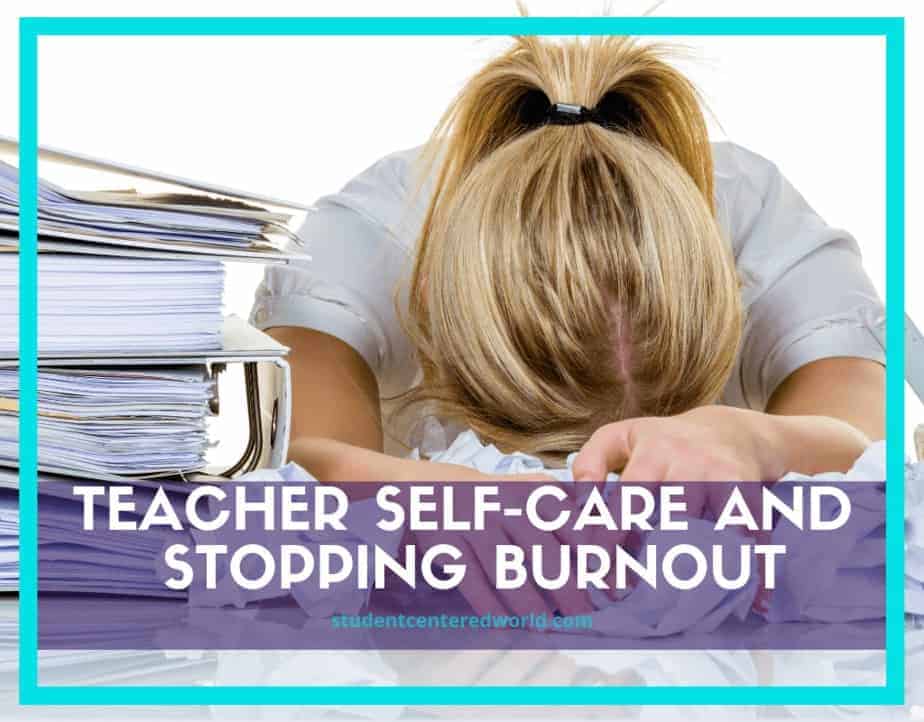Big Plans for 21st-Century Teacher Retention and Recruitment Woes
For the past several years, teachers have been leaving the classroom at an alarming rate. Add in all the complications of the COVID-19 era and you have an entire system that is falling apart at the seams, struggling with both teacher retention and recruitment. While some districts appear to be getting it right, focusing on mental health and finding ways to snag teachers some more time to work their magic, others are trying to trudge ahead as if nothing is wrong.
This is not okay…for anyone.
Why teacher retention and recruitment has struggled
I’ve written about COVID-19 attrition in the past, but at this point, there’s not much to say other than it’s continuing. That is because teachers are leaving the classroom for a variety of reasons, while administrators are letting them go mainly due to their own ignorance and lack of desire to push through change.
As one principal recently explained:
We had a teacher leave this year and we were given the opportunity to provide input on who we would like to see replace them. The superintendent, with no explanation, didn’t even follow one of our recommendations. He just picked someone he knew from his past. I fought it as best I could but in just another slap in the face to us, my input was cast aside.
It is completely understandable why teachers would leave due to such an administration. But not having any desire to connect with the profession only exacerbates these kinds of problems and leads to them getting worse over time. Add in the disrespect for the profession that has become more than commonplace in the last several years, and you have the recipe for disaster that is happening in far too many schools today.
But this isn’t the only reason why negative teacher retention and recruitment has skyrocketed. Factor in all of the mental health issues teachers are facing, which I wrote about earlier this year, and you have an entire profession on edge with little to no resources or help. Given how our society views mental illness, it’s little surprise that some teachers are struggling with their own problems, barely holding on by a thread.
And because of either lack of knowledge or more likely fiscal restrictions, many administrators are ill-equipped to deal with this at best and downright negligent at worst.
Then there is the actual teaching itself, which has grown exponentially more difficult over time. Teachers are working much longer hours, not only because they have to actually be at school for longer periods of time, but also because there is more work outside the classroom to prepare students in various ways. Many teachers are now solely responsible for testing students and analyzing results in order to pass or fail them based on the latest round of mandates from the state or federal government.
And this practice is beginning to bleed into required grades, too, with teachers scrambling to find ways to report results in the most beneficial way possible by balancing their metrics.
Then you have all of the distractions teachers are facing due to cell phones and other technology that has invaded schools in recent years. Between parents texting their complaints about other parents one minute and then gushing about their child’s great test score the next, you have a lot of potential for misunderstandings that can only be dealt with if teachers are able to manage it.
And all of this is happening while they’re trying to actually teach students who live in a world that is even more foreign than when we were growing up. The disrespect for teachers is real, as are the problems students are dealing with, which means that administering punishment or discipline is very difficult because you have to tread carefully to not make things worse. Then there are the new and emerging threats such as cyberbullying and sexting that create even more safety issues for kids and teachers alike.
You look at all that and it’s no wonder there’s a teacher retention and recruitment problem.

The Underlying Issues of Teacher Retention and Recruitment
All of that is to say nothing of the political nature of teaching today. Teachers are getting death threats from parents who don’t agree with them, while students are almost being recruited to be anti-teacher activists due to the false narrative being pushed by many. And this kind of thing has become so normal in our country that it barely gets any media attention anymore.
So, with a profession that is underpaid, overworked, and very misunderstood by the public as a whole, many teachers are leaving for greener pastures or at least places where they have more support from those at the top of the food chain. And when this continues year after year, you end up with teacher retention and recruitment issues that are very hard to solve unless the whole educational climate changes.
And with these issues being ignored by the powers that be at every level of government, it’s little wonder why teacher retention and recruitment have become such a problem. Add in all of the other problems that I discussed earlier and you have yourself one hell of a mess that won’t be fixed overnight or even in one year.
Creating a Teacher Retention and Recruitment Improvement Plan
So, how does one move forward to fix this riddle of problems with teacher retention and recruitment? Well, it has to start at the top with legislators and policymakers who are willing to take action. As I said earlier, I’m not holding my breath for that because our country’s entire foundation is built on many issues that are problematic when viewed through today’s lens. Once it changes, hopefully, something will be done to help teachers fight back against all of the downsides of their profession.
But until that time comes, what can teachers do to make their own lives easier? Well, I would suggest that they band together and rally for better pay, shorter hours, more planning time (to allow them to grade papers, keep track of data, etc.), and more student contact time. And they need to do this in a way that doesn’t allow power-hungry administrators to take advantage of them by making these kinds of requests without offering anything in return.

With the help of social media with sites like Facebook, Instagram, and Twitter, I think this is possible. By getting together, planning ahead of time to ensure that their message is clear and concise, and then pushing it out there through various avenues, teachers can get better. Plus, if they’re doing it right, they’ll be helping the students because having quality educators in the classroom benefits everyone.
What can the teacher do?
You’re probably here because you don’t want to be one of these teacher retention and recruitment statistics, but you’re drowning and something has to give. Or perhaps you’re a school administrator trying to find a way to do better.
First, I applaud you both.
Second, I think you’re going to need a lot more than a pat on the back because this is going to take some serious work to get it right again.
For starters, we really need to get more of our educators vested in the field and invested in it long-term. I think we’re doing a decent job at retaining them once they get into the profession, but we need to do better at keeping them there and that means making the teaching profession what they want it to be.
To do this, I recommend teachers get the support they need from their state, county, and local education leaders to get into positions where they can help guide policy for the betterment of everyone involved. And that would include administrators because, if we’re going to do this right, it needs to be a collaborative effort between all parties involved with an emphasis on creating a bright future for the next generation of Americans.

What can school administrators do?
“Many teachers leave the profession after their third year – roughly 50 percent – and only 20 percent stay past their sixth year.”
I’ll be honest: I don’t know how to definitively solve this issue of teacher retention and recruitment. I find it very discouraging that our teaching force is getting replaced as quickly as it is, but I also understand that it’s not all bad. If you’re a school administrator who has the power to fix the problems created by years of education reform, then please do your best because everyone involved in this system will benefit from it.
Your teacher retention and recruitment data will speak for themselves.
But what difference can one person really make when we have entire states and districts seemingly hellbent on creating a profession that isn’t sustainable?
I wish I had the solution, but I don’t. And I truly believe it’s going to take a lot of courage on someone’s part in order for us to put our best foot forward and create something better than we currently have in place.
Let me suggest this, though: we need to get better at listening and we need to do it fast. We can’t keep doing what we’re doing because, right now, we’re not even coming close to getting the results that we want and this is beginning to impact all of us in a very negative way.
So for everyone involved in education – teachers, administrators, lawmakers, policymakers, parents, etc. – I think we all need to take the time to do some honest self-reflection and figure out how we can work together to improve America’s teacher retention and recruitment issues for the betterment of everyone in this country.
I don’t have all of the answers or even most of them. But if we don’t take the time to voice our concerns and do something about them, then we’ll continue to see the sad statistics posted on our newspapers’ front pages.
Stop Driving the Teacher Struggle Bus
Are you struggling with student engagement, apathy, or keeping your class on track?
💫💫 There’s hope! 💫💫
Join my free teacher workshop “Choosing Choice” and in just 60 minutes, you’ll craft a practical plan to revitalize your teaching. Discover the magic of student choice in boosting engagement, gain quick implementation ideas, and explore strategies for year-long success.
Unlike overwhelming workshops, my approach guides you in real-time, providing more classroom options, reducing stress, and giving you more personal time.
Plus, you’ll earn a 1-hour professional development certificate and have 7 days of access.
Don’t miss this chance to transform your teaching; click below to secure your spot now!






